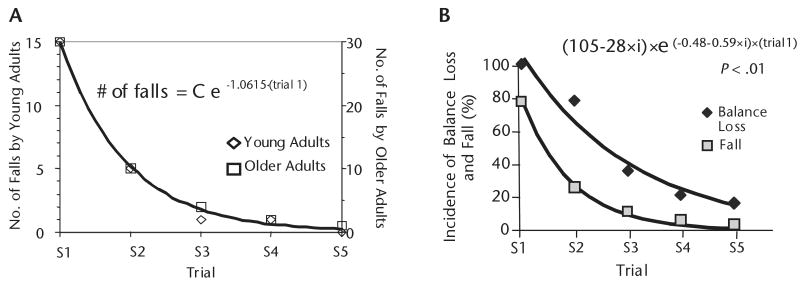Figure 4.
(A) Fall incidence decreased exponentially with repeated exposure to a slip during a sit-to-stand task and at a similar rate in young and older adults. Shown are the number of falls by each age group in each of the 5 trials of the first slip block and the corresponding best-fit exponential relationship identified through nonlinear regression. The parameter for initial fall incidence (C) equaled 14.9 and 30.0 in young and old adults, respectively. The exponential relationship explained 99.7% of the variance in the number of falls, with P<.05 for all parameters. Fall incidence among both groups decreased by the same factor of 3 following each slip exposure. (From: Pavol MJ, Runtz EF, Edwards BJ, Pai YC. Age influences the outcome of a slipping perturbation during initial but not repeated exposures. J Gerontol A Biol Sci Med Sci. 2002;57:M496–M503. Copyright © The Gerontological Society of America. Reproduced by permission of the publisher.) (B) Although instability is neither a sufficient nor a necessary condition to cause falls that result from vertical hip descent and limb collapse, improved stability directly resulted in the reduction in fall incidence among older adults (i=0 for balance loss and 1 for fall in the exponential equation). The rate of incidence decline was almost twice as fast for falls as for balance loss (exponential rate constants of −1.07/trial and −0.48/trial, respectively).

